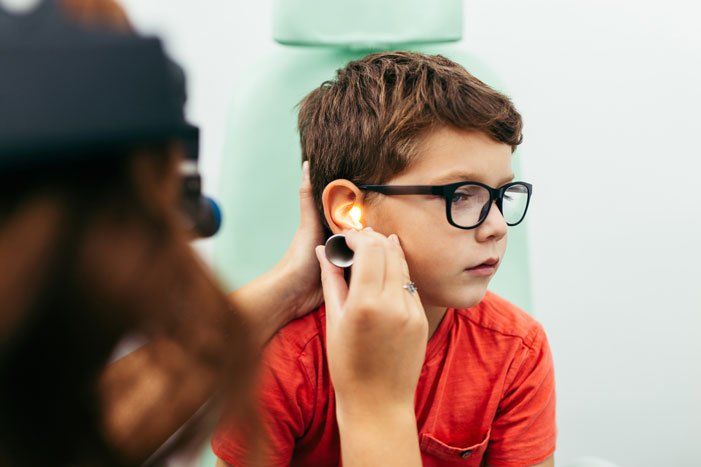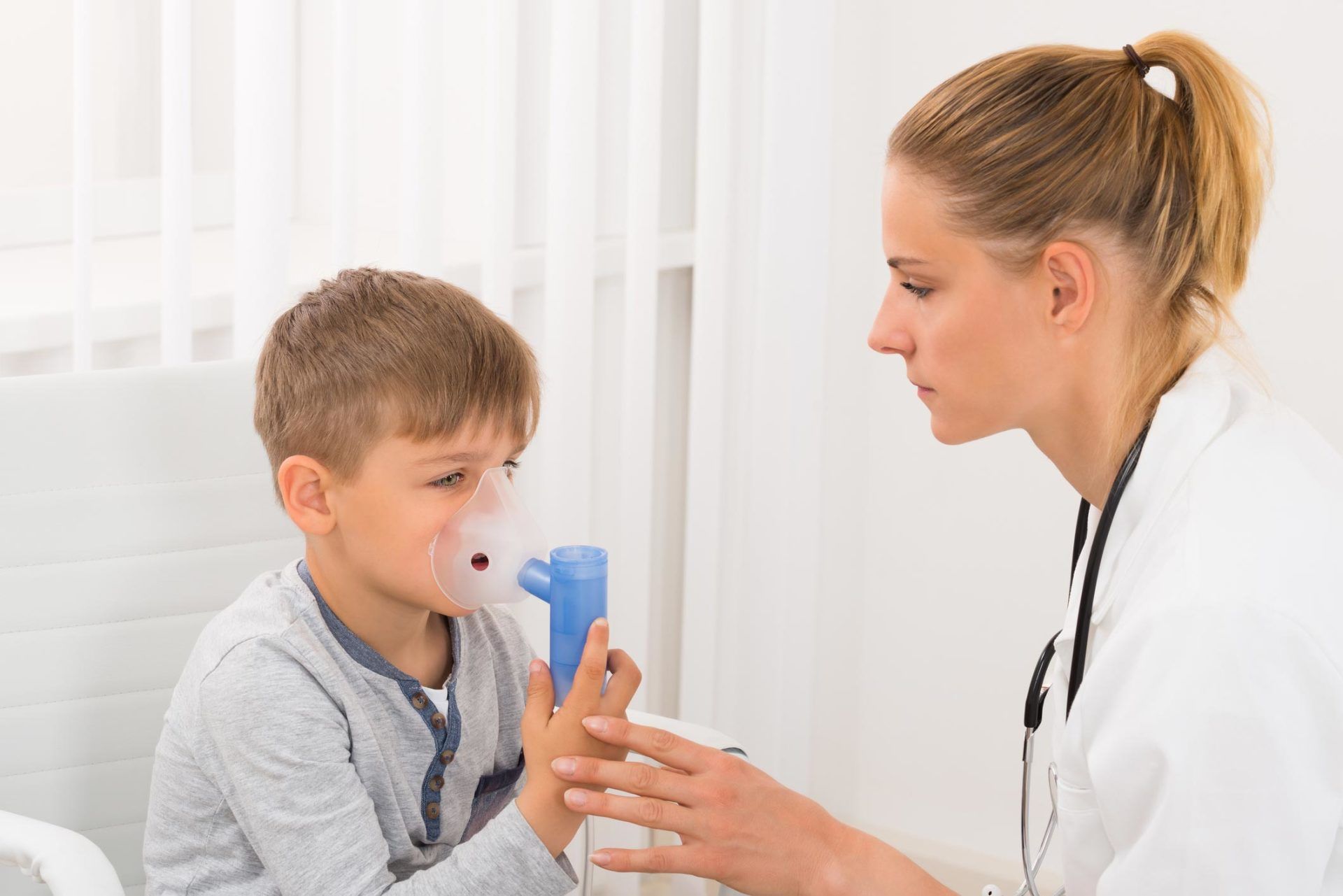
The American Association for Pediatric Ophthalmology
recommends that children undergo vision screening as a newborn, again between six and 12 months of age, and a third time at the age of three. Vision screening is not a full eye exam, but rather a simple set of tests to assess the child's vision and the function of the eyes. The screening can be performed by your regular pediatrician.
So why is vision screening so important at an early age? As is true with most medical conditions, abnormalities of the eyes are easier to correct and manage when they are detected early. The following are four of the most common ailments detected during childhood vision screenings.
1. Strabismus
Strabismus is an abnormality in the way the eyes are aligned. One or both eyes may focus too far out, in, up, or down. The condition is caused by an abnormality in either the muscles that control the eyes, or in the way the brain controls the muscles that move the eyes. Strabismus may be present at birth, or it may appear when the child is a toddler. Pediatricians can easily detect it during a routine vision screening.
The way strabismus is treated depends on its severity. Your pediatrician and eye doctor may recommend special glasses, eye exercises, and even surgery to correct the problem. One thing is for sure: the sooner treatment is begun, the better your child's results will be. Most cases can be fully corrected if caught early.
2. Amblyopia
Amblyopia is colloquially known as lazy eye. The term does not refer so much to the placement of the eye as the fact that the child does not use the affected eye for vision. Instead, they rely only on the eye with normal alignment and behavior. Amblyopia often occurs along with strabismus. An eye may be misaligned due to strabismus, and because the misalignment makes it difficult for the eye to focus, that eye stops generating vision properly.
When strabismus is to blame for lazy eye, correcting the strabismus often helps correct the amblyopia, too. Your child's doctors may also recommend that he or she wear a patch over the normal eye, which forces him or her to use and strengthen the lazy eye. This therapy is most effective when begun early.
3. Myopia
Myopia is the technical term for nearsightedness, a condition in which patients can see close-up items well, but struggle to see items that are further away. It is caused by eyeballs that are too long from front to back. The length of the eyeball affects the way light focuses at the back of the eye.
Myopia is very common, and it can start to present at any time during childhood. Usually, it is easily managed with glasses. When myopia is detected early and your child is given the proper glasses, they will have an easier time learning as they can see the world clearly. Unaddressed myopia can also lead to headaches and dizziness.
4. Hyperopia
Hyperopia is essentially the opposite of myopia. The eyeball is too short, which makes it difficult for the person to see things that are close up, although they can see far-away items clearly. Hyperopia in children puts them at risk for also developing amblyopia, so it's important to detect and treat hyperopia as soon as possible.
Often, children with hyperopia grow out of the condition in time. However, they will need to wear glasses in the meantime to help prevent a permanent impact on their vision.
If your child is between the age of six and 12 months or is approaching his or her third birthday, make sure you schedule an appointment for vision screening with your pediatrician. Y.H. Parikh & Associates are here to help if needed, offering pediatric services including vision screening to patients in the Norcross area.
So why is vision screening so important at an early age? As is true with most medical conditions, abnormalities of the eyes are easier to correct and manage when they are detected early. The following are four of the most common ailments detected during childhood vision screenings.
1. Strabismus
Strabismus is an abnormality in the way the eyes are aligned. One or both eyes may focus too far out, in, up, or down. The condition is caused by an abnormality in either the muscles that control the eyes, or in the way the brain controls the muscles that move the eyes. Strabismus may be present at birth, or it may appear when the child is a toddler. Pediatricians can easily detect it during a routine vision screening.
The way strabismus is treated depends on its severity. Your pediatrician and eye doctor may recommend special glasses, eye exercises, and even surgery to correct the problem. One thing is for sure: the sooner treatment is begun, the better your child's results will be. Most cases can be fully corrected if caught early.
2. Amblyopia
Amblyopia is colloquially known as lazy eye. The term does not refer so much to the placement of the eye as the fact that the child does not use the affected eye for vision. Instead, they rely only on the eye with normal alignment and behavior. Amblyopia often occurs along with strabismus. An eye may be misaligned due to strabismus, and because the misalignment makes it difficult for the eye to focus, that eye stops generating vision properly.
When strabismus is to blame for lazy eye, correcting the strabismus often helps correct the amblyopia, too. Your child's doctors may also recommend that he or she wear a patch over the normal eye, which forces him or her to use and strengthen the lazy eye. This therapy is most effective when begun early.
3. Myopia
Myopia is the technical term for nearsightedness, a condition in which patients can see close-up items well, but struggle to see items that are further away. It is caused by eyeballs that are too long from front to back. The length of the eyeball affects the way light focuses at the back of the eye.
Myopia is very common, and it can start to present at any time during childhood. Usually, it is easily managed with glasses. When myopia is detected early and your child is given the proper glasses, they will have an easier time learning as they can see the world clearly. Unaddressed myopia can also lead to headaches and dizziness.
4. Hyperopia
Hyperopia is essentially the opposite of myopia. The eyeball is too short, which makes it difficult for the person to see things that are close up, although they can see far-away items clearly. Hyperopia in children puts them at risk for also developing amblyopia, so it's important to detect and treat hyperopia as soon as possible.
Often, children with hyperopia grow out of the condition in time. However, they will need to wear glasses in the meantime to help prevent a permanent impact on their vision.
If your child is between the age of six and 12 months or is approaching his or her third birthday, make sure you schedule an appointment for vision screening with your pediatrician. Y.H. Parikh & Associates are here to help if needed, offering pediatric services including vision screening to patients in the Norcross area.







